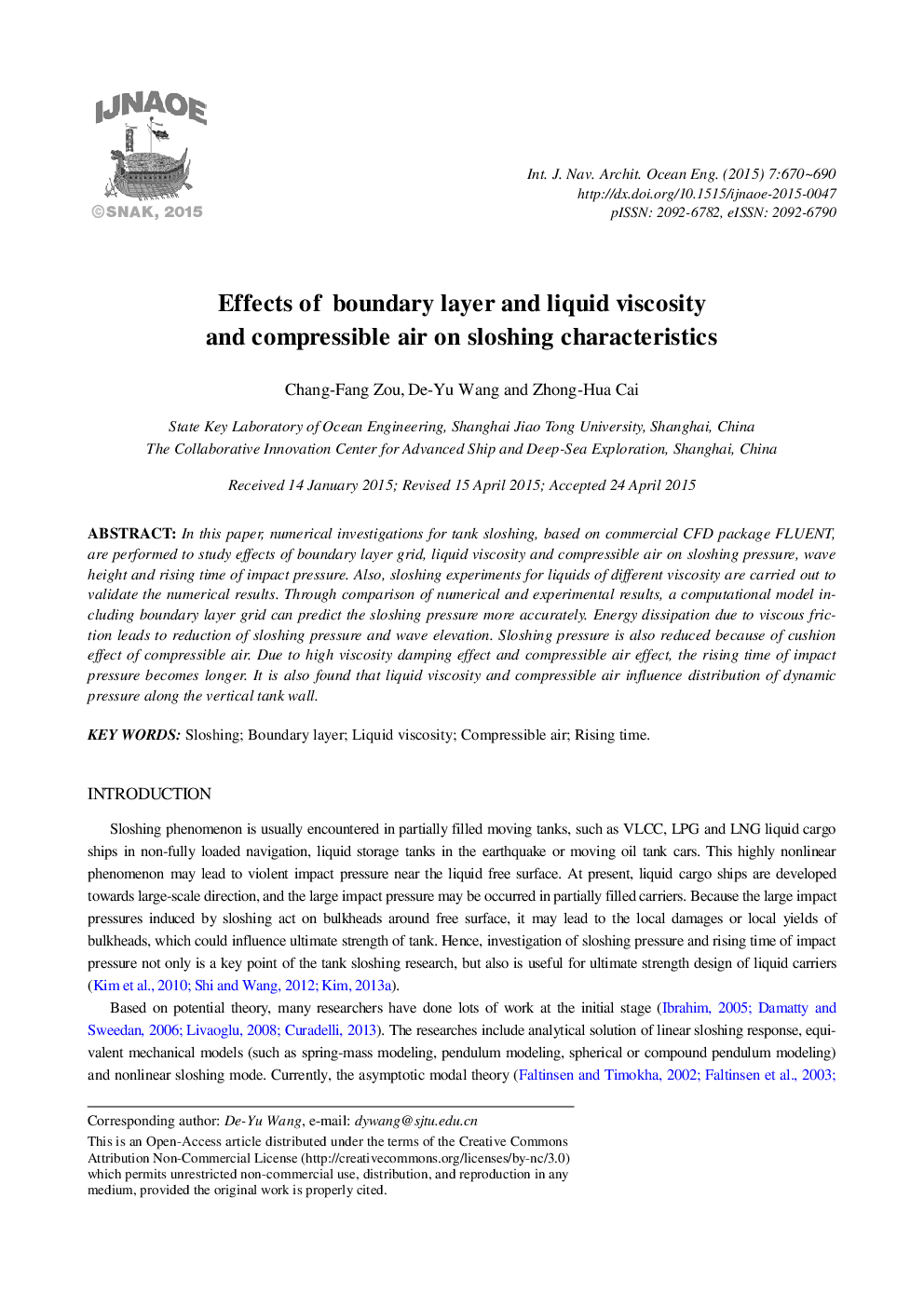| Article ID | Journal | Published Year | Pages | File Type |
|---|---|---|---|---|
| 4451727 | International Journal of Naval Architecture and Ocean Engineering | 2015 | 21 Pages |
ABSTRACTIn this paper, numerical investigations for tank sloshing, based on commercial CFD package FLUENT, are performed to study effects of boundary layer grid, liquid viscosity and compressible air on sloshing pressure, wave height and rising time of impact pressure. Also, sloshing experiments for liquids of different viscosity are carried out to validate the numerical results. Through comparison of numerical and experimental results, a computational model in-cluding boundary layer grid can predict the sloshing pressure more accurately. Energy dissipation due to viscous friction leads to reduction of sloshing pressure and wave elevation. Sloshing pressure is also reduced because of cushion effect of compressible air. Due to high viscosity damping effect and compressible air effect, the rising time of impact pressure becomes longer. It is also found that liquid viscosity and compressible air influence distribution of dynamic pressure along the vertical tank wall.
